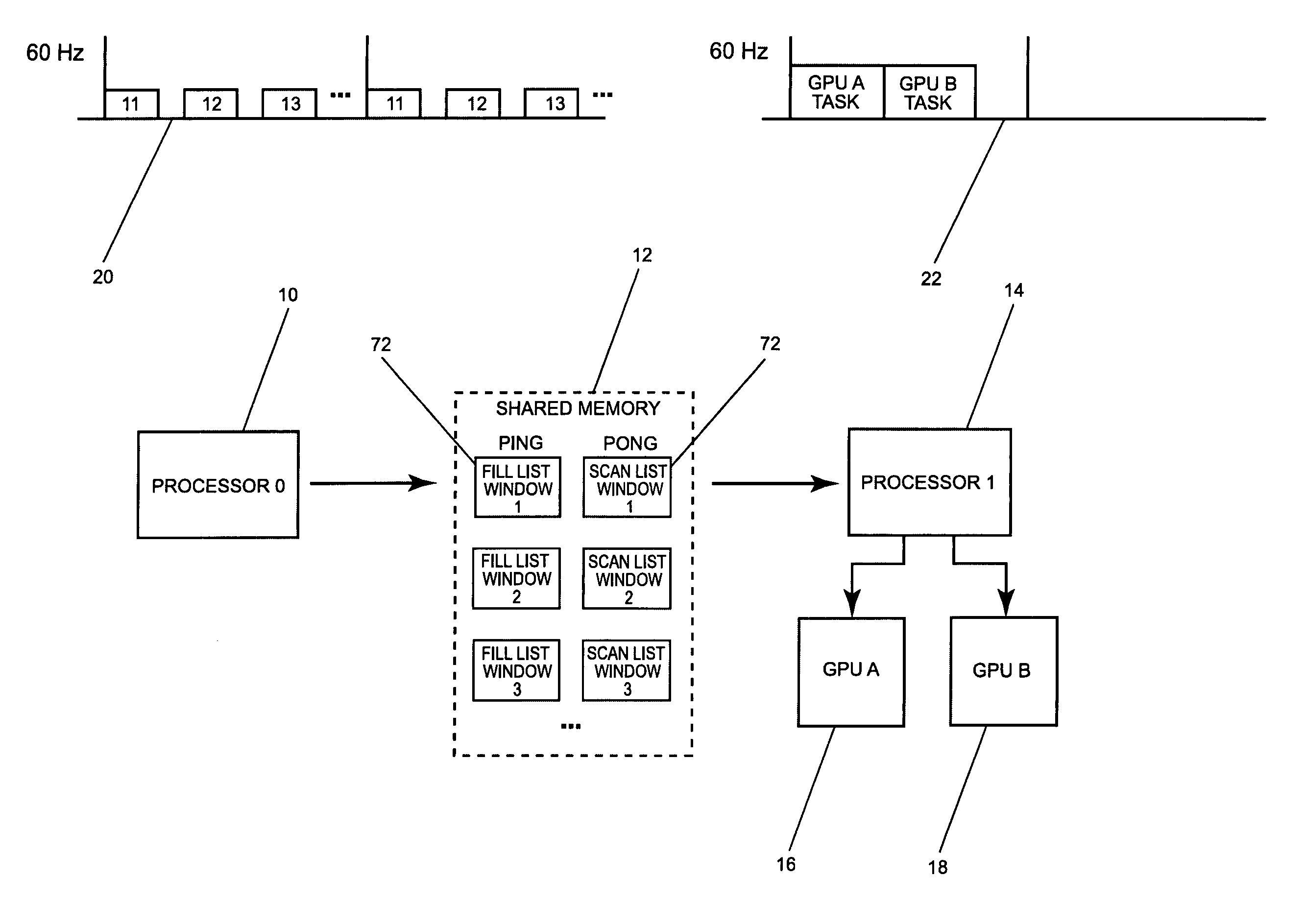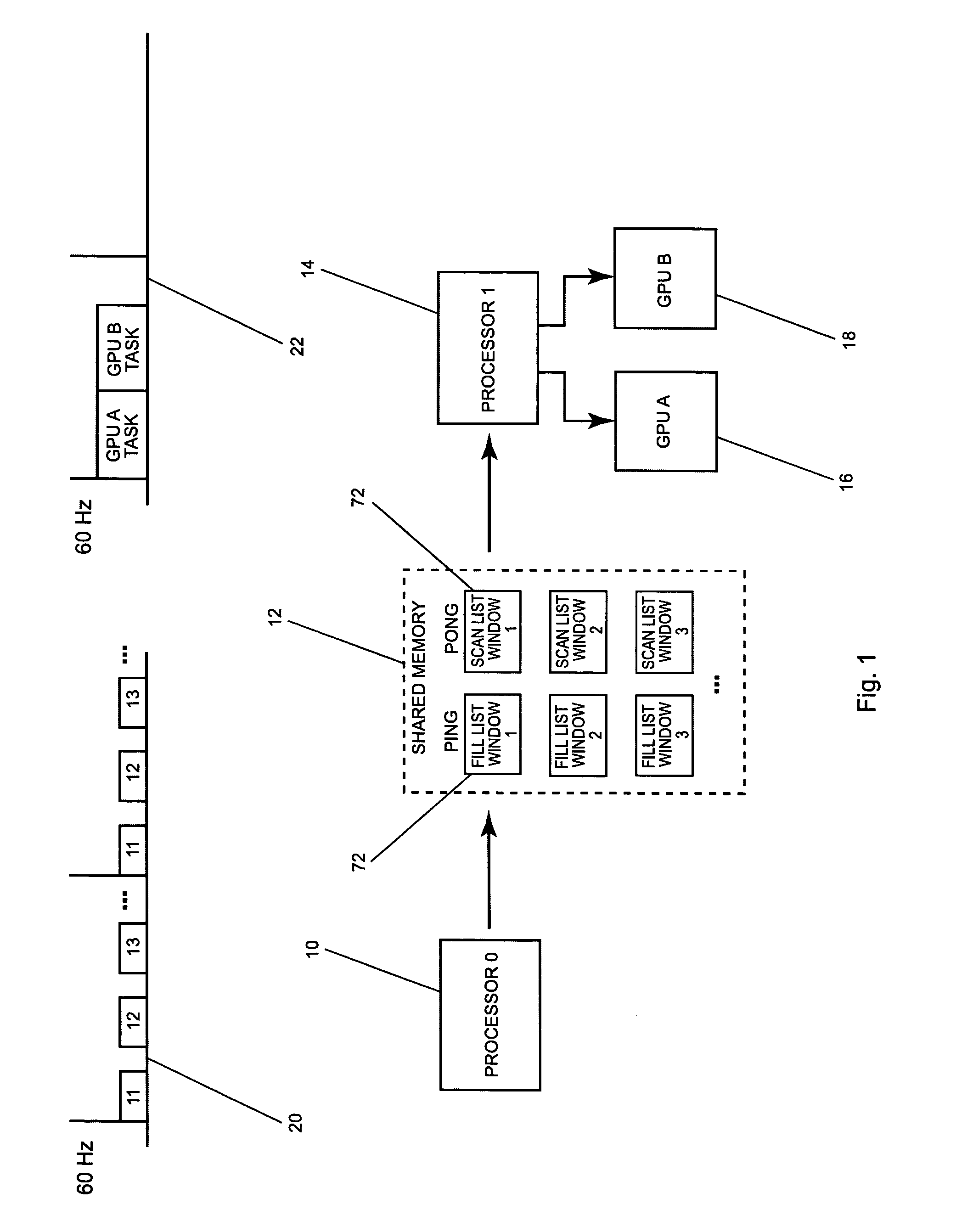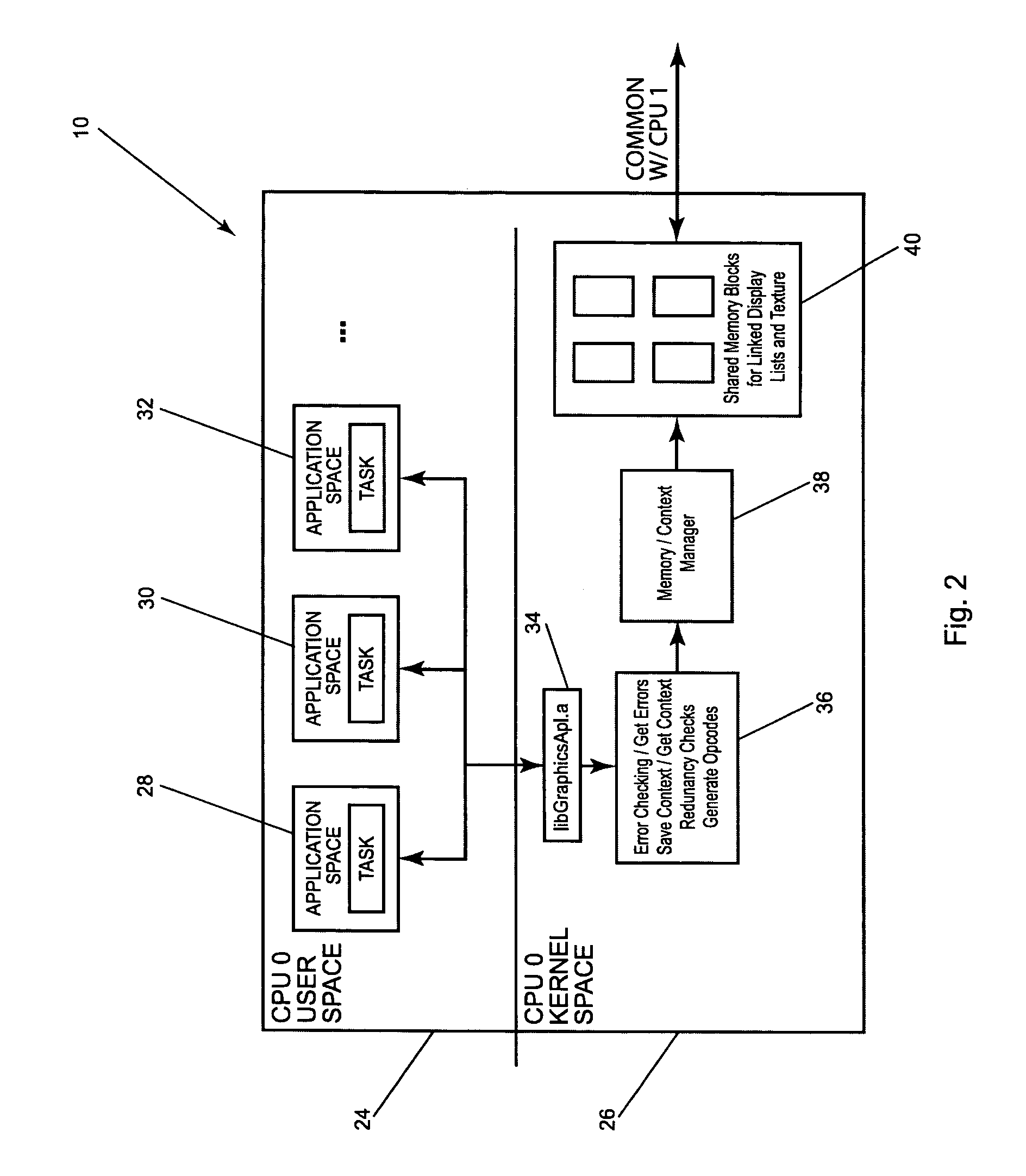Dual processor accelerated graphics rendering
a graphics rendering and dual-processor technology, applied in the field of graphics processing, can solve the problems of slowed graphics rendering throughput, time needed for graphics rendering, overhead of coordination between central processing units, etc., and achieve the effect of flexible time and space partitioning and gain in graphics performan
- Summary
- Abstract
- Description
- Claims
- Application Information
AI Technical Summary
Benefits of technology
Problems solved by technology
Method used
Image
Examples
Embodiment Construction
)
[0024]The present invention is a method of utilizing two or more processors to increase graphics performance to a single screen. The preferred embodiment of the invention is shown in FIGS. 1-3. One processor 10 executes the application while the second processor 14 drives the GPU to render graphics. In this embodiment, a subset of OpenGL® with window / context functionalities is supported. Although OpenGL® is a common API, window / context functions are not consistent across all implementations. On application processor 10, an OpenGL® function call will not render graphics, but rather encode the instruction with parameters to common memory 12 shared with the graphics processor 14, which is much faster. The second processor 14 then decodes the graphics data from application processor 10 and executes a single application of executing all stored instructions. The lists are buffered, and a call to swap the buffers for that window causes the rendering processor 14 to begin executing that li...
PUM
 Login to View More
Login to View More Abstract
Description
Claims
Application Information
 Login to View More
Login to View More - R&D
- Intellectual Property
- Life Sciences
- Materials
- Tech Scout
- Unparalleled Data Quality
- Higher Quality Content
- 60% Fewer Hallucinations
Browse by: Latest US Patents, China's latest patents, Technical Efficacy Thesaurus, Application Domain, Technology Topic, Popular Technical Reports.
© 2025 PatSnap. All rights reserved.Legal|Privacy policy|Modern Slavery Act Transparency Statement|Sitemap|About US| Contact US: help@patsnap.com



